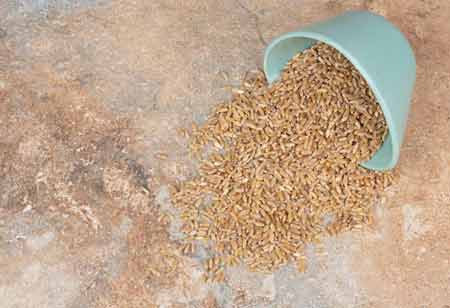Thank you for Subscribing to Agri Business Review Weekly Brief
Various Obstacles in Grain Handling and Storage
Addressing the issues can help reduce post-harvest losses, improve grain quality, and increase overall profitability in the agricultural sector.

By
Agri Business Review | Thursday, May 08, 2025
Stay ahead of the industry with exclusive feature stories on the top companies, expert insights and the latest news delivered straight to your inbox. Subscribe today.
Fremont, CA: Grain handling and storage play a crucial role in preserving the quality and quantity of harvested crops. Farmers, grain handlers, and agricultural businesses face numerous challenges in managing proper storage. Such challenges can result in substantial economic losses, food waste, and deteriorating grain quality without adequate facilities. Small-scale farmers, in particular, often lack access to modern silos, elevators, and drying equipment, resorting to outdated and less effective storage methods. Makeshift containers are vulnerable to damage from pests, moisture, and weather, increasing the risk of spoilage and further compromising grain quality.
Even in regions with better infrastructure, there can still be bottlenecks due to limited capacity or aging equipment. Grain elevators can become overwhelmed during peak harvest periods, causing delays in handling, drying, and storing grain. It can expose harvested grain to moisture and other damaging environmental conditions. The major challenge in grain handling and storage is the need for adequate infrastructure in developing countries. Grains must be adequately dried to prevent mold growth, spoilage, and pest infestation.
Maintaining ideal moisture levels during storage is a complex process. Improperly dried grains can develop mold or become breeding grounds for insects, while over-drying can lead to cracking and breakage, reducing grain quality and marketability. Controlling moisture levels is incredibly challenging in regions with high humidity or frequent rainfall. The cost of grain dryers and their energy consumption can also be prohibitive for small farmers. Some traditional drying methods, such as sun-drying, are highly dependent on weather conditions and can lead to uneven drying, increasing the risk of spoilage.
Pests and rodents pose a significant threat to stored grain. Insects such as weevils and moths can infest storage facilities, consuming and contaminating the grain. Rodents eat the grain but contaminate it with droppings, making it unfit for consumption. Pests and rodents can lead to substantial losses in quantity and quality. Managing pest infestations in large-scale storage facilities can be expensive and time-consuming. Overusing chemical treatments can lead to the development of resistant pest species, further complicating pest control efforts. Maintaining the right temperature during grain storage is essential to prevent spoilage and maintain grain quality.
Regulating the temperature in storage facilities is challenging, particularly in regions with extreme weather conditions. Modern temperature control systems, such as aeration fans and automated monitoring, can help maintain the ideal environment for grain storage. The cost of these systems can be prohibitive for many small-scale farmers. Inadequate insulation in storage structures makes it difficult to regulate temperatures effectively in low-cost or traditional storage facilities. The high cost of purchasing, installing, and maintaining this equipment poses a significant barrier for many farmers, particularly in developing countries and among small-scale operations.
Access to credit and financing is often limited for smallholder farmers, making it difficult for them to invest in modern infrastructure. Without proper storage facilities, they are more vulnerable to post-harvest losses. Grain handling and storage require specialized skills, such as operating equipment, monitoring grain conditions, and managing pest control. Many regions face labor shortages, especially during harvest season when the demand for skilled workers is at its peak. More training programs may be needed to equip farmers and workers with the knowledge to manage modern grain storage systems effectively.





